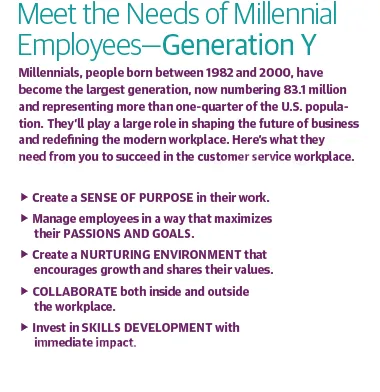Earlier this year, Wal-Mart purchased online e-commerce start-up Jet.com for a whopping $3.3 billion. Wal-Mart was willing to spend so much on a brand with a near-Amazon-caliber supply chain and a Millennial customer base that prefers start-up players, according to a Wal-Mart press release. Jet.com approaches e-commerce and delivery differently, with rewards and discounts based on how many items you put in your basket or if you waive the free return option. It also allows customers to pay with debit cards, which is a perk for younger shoppers.
There’s a lot to love about a start-up business model. The innovation. The fast pace of activity. The new ideas and energy. The reimagining of both business operations and the workplace. The potential to change the world. And in some cases, even the bean bag chairs, lifestyle work experiences, and yoga or Pilates studios—depending on what you’re into these days.

Many start-ups approach customer delight differently, as well. Newer companies have the luxury of building their service organizations from scratch. And with that blank canvas, most are designed with the customer experience at the forefront. Often, voice is a channel of last resort, or at the very least just one of many ways to interact, behind self-service, virtual assistants/chatbots, live chat, social media, and video. They try to anticipate why customers engage in the first place, then design a preferred experience preventing the need to engage. They try to deliver a proactive versus reactive support strategy, one that always adds value. They automate simple tasks to speed up resolutions and reduce the hassle for customers, saving money in the process—woohoo! Their approach to customer experiences that are out of this world are success-driven, not process-driven.
Guess what? You don’t have to be company founded in 2006 or later. Traditional, or dare we say “older,” companies willing to think differently can apply a start-up mentality to their legacy customer service operations to enhance and deliver the types of experiences customers now demand. They won’t need to look elsewhere. It doesn’t take mammoth systems implementations. Some simple steps can make a world of difference in how to operate your customer service organization with a start-up mentality.
1. Be authentic. Consumers today won’t stand for anything less. They know when someone is reading from a script or simply going through the motions. Acknowledge the humanity behind the interactions. Let people be people. This may mean giving up a little control, but with the right staff it will work in your favor.
2. Employ expert advisors, not associates. People will never be completely replaceable. Save the human interactions for the more complex issues that may come up. Knowing this, make sure associates who do engage are knowledgeable and advisory, not just process-focused. Avoid transfers, escalations, and negative experiences. Position new hires with expert staff empowered and encouraged to resolve issues. Provide them with the tools and “brain food” (training) to be phenomenal brand stewards. If possible, these teammates should themselves be brand users and advocates who understand the consumer experience first-hand. If not, get them ingrained in your customer experience with tools like augmented reality and interactive digital learning. These experts can be valuable to improve internal issues, as well. Employees, like customers, want to be listened to. Give them a voice in how the company operates.
3. Create a great teammate experience. Attrition is the biggest expense in a contact/customer experience center. So it’s imperative that you create an environment where people are happy to come to work, happy to come back, and feel proud of what they do. You can measure this by the number of qualified teammates who join your brand. Sure, perks and fun colors on the walls are good, but even more important is the team approach. Most start-up firms tend to work in teams as a way to develop a great environment, without the strict hierarchy and barriers of siloed groups. Everyone pitches in, and job descriptions are loose. The culture is about mentorship and collaboration, where the entire team is rewarded for success, not just the individual.
4. Embrace digital interactions. Voice is important, but only one of many channels consumers prefer to use. Companies should be prepared to deliver new economy tools in a customer service environment. Whether it’s a game-based content learning strategy, tweet, Instagram post, or Snapchat video, employees should be comfortable working in a digital, socially driven environment, and should understand the etiquette and expectations of those platforms.
5. Mistakes are ok. Start-up culture is ok with failure. How many start-ups get it right on the first try? Failure is an opportunity to learn from your mistakes. An empowered customer service organization may sometimes make mistakes. But that’s ok. They are learning opportunities, and show consumers like you and me that there are people who care enough to try new things on the other end of the interaction.
6. Pay more and be flexible. Successful start-ups attract the best talent with the brightest ideas. In order to do that, you need to offer the best working environment. Customer reps are some of the lowest paid associates across industries, and that won’t fly if you’re committed to customer service excellence. Align your compensation and incentive structure around what the best teammates want. It might not all come down to money. Some companies offer work-at-home options for high performers, more flexible schedules, or greater empowerment.

















